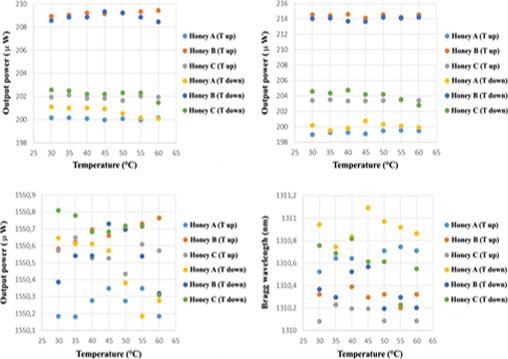Characteristics of fiber Bragg grating due to temperature changes in honey solution
DOI:
https://doi.org/10.59190/stc.v2i2.2Keywords:
Bragg Wavelength, Fiber Bragg Grating, Honey, Optical Power, TemperatureAbstract
The high sensitivity and low power consumption of fiber Bragg grating (FBG), has been widely applied in optical technology to measure temperature and strain. Currently, the need for detection by the industrial sector is increasingly being developed, one of which is the detection of characteristics in honey solutions. The use of FBG as a detector has a great opportunity to see the unique characteristics of the honey solution. Therefore, this problem needs to be followed up by analyzing the effect of honey temperature on the FBG output power, changes in Bragg wavelength, and the rate of temperature change. The research method was carried out by placing FBG in a heated honey solution, then measuring the temperature between 30°C – 60°C with an increase of 5°C. The FBG used consists of a wavelength of 1550 nm and 1310 nm which is fed with 1 mW of input power. The results showed that the highest output power of FBG against honey solution B was in the range of 213.60 – 214.58 mW. Changes in Bragg wavelength were quite significant for the increase in temperature of honey solution with a difference of 0.58 – 0.76 nm.

Downloads
Published
How to Cite
Issue
Section
License
Copyright (c) 2022 Yezi Nur Azizah, Wahyu Candra, Mohammed M Fadhali

This work is licensed under a Creative Commons Attribution 4.0 International License.










